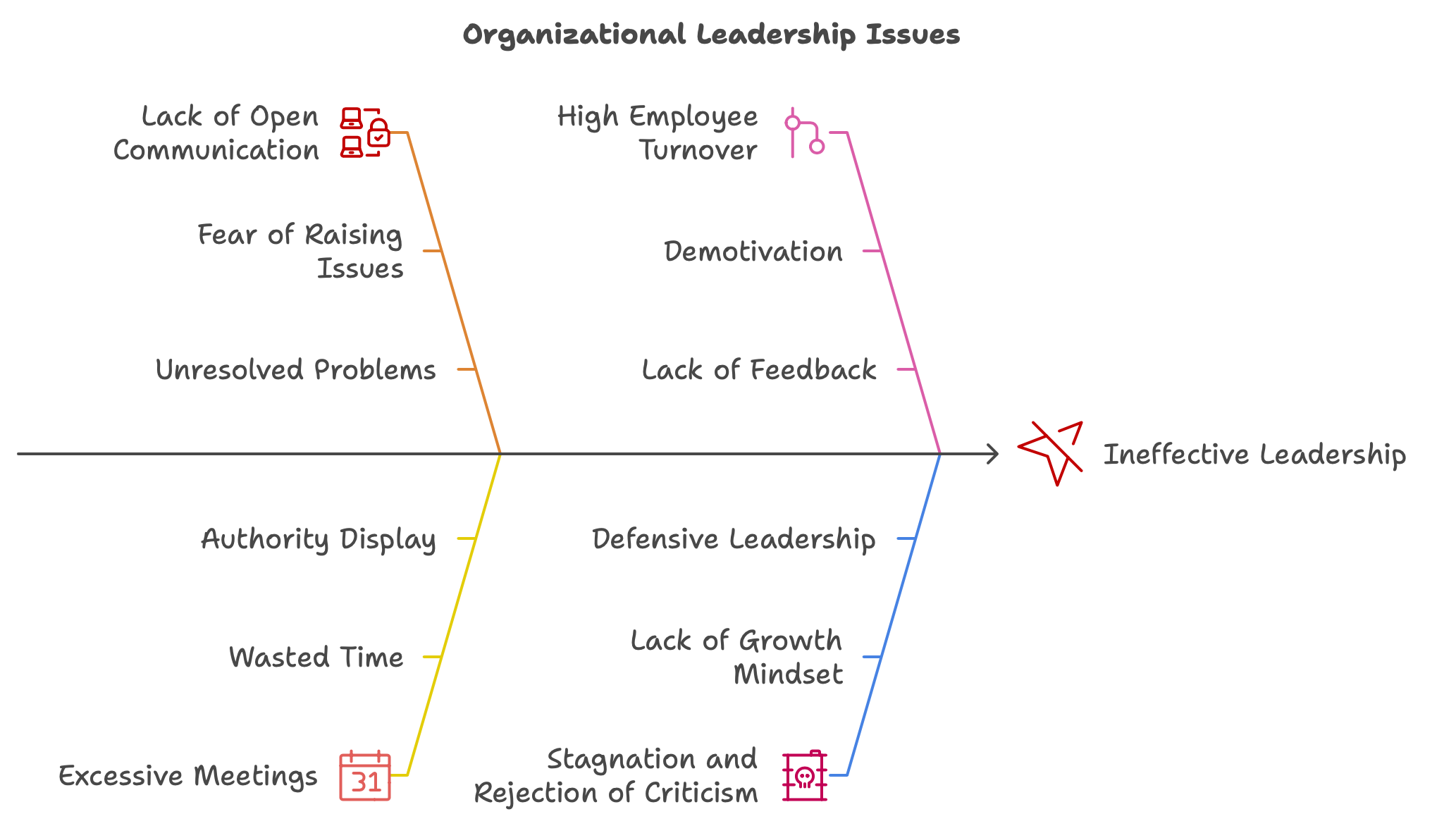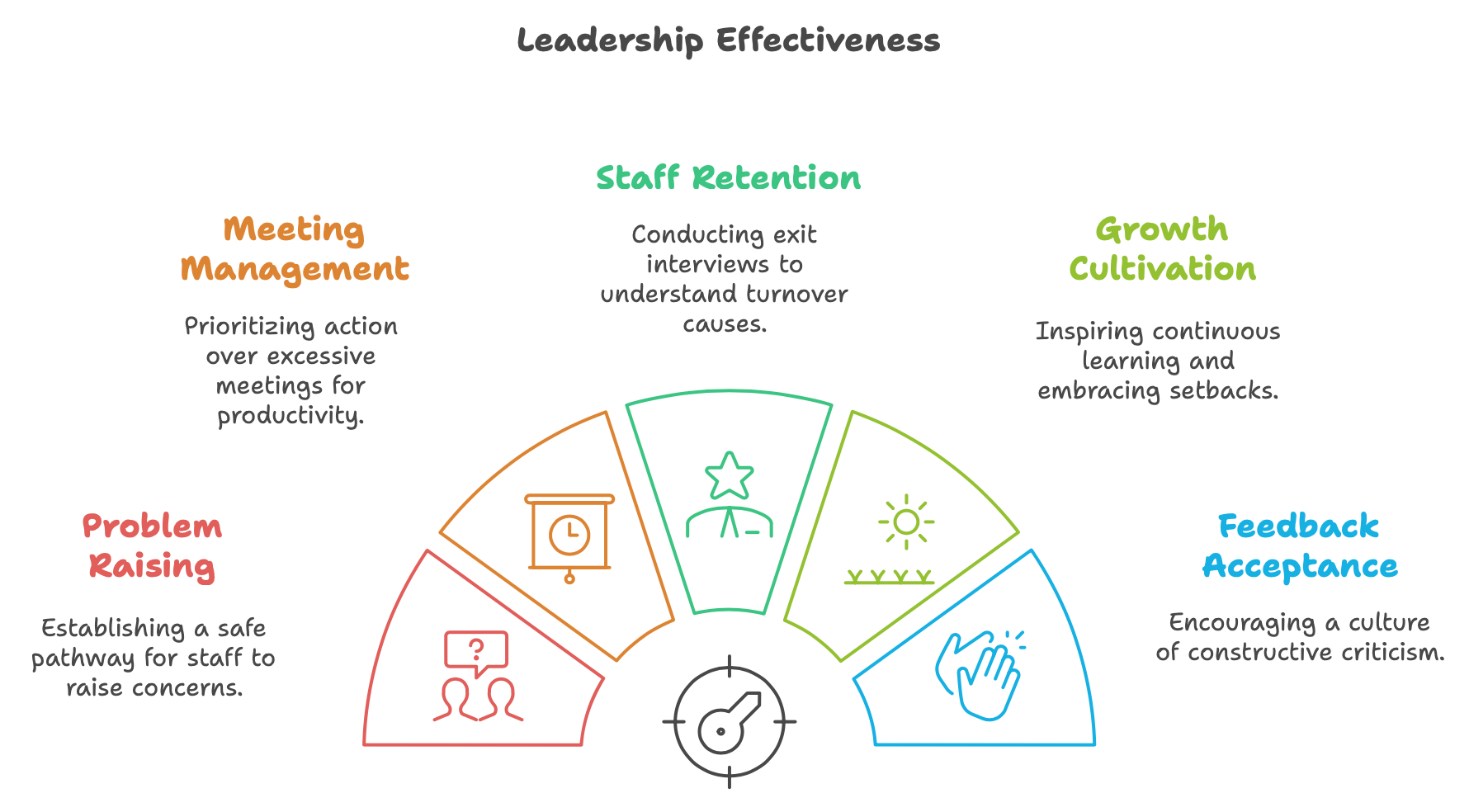Poor leadership can be detrimental to any organization, creating a toxic work environment and hindering progress. Despite its negative consequences, poor leadership continues to persist. Oftentimes, ineffective leaders possess the skills to appear competent at the expense of actually being effective. In this article, we will explore five clear signs of poor leadership and discuss strategies to address them.

1. Nobody raises problems
In an environment where nobody feels comfortable raising issues, problems go unresolved, and the organization's progress stagnates. The accumulation of unaddressed issues fosters a toxic work culture, leading to talented individuals leaving and demotivating those who remain. To remedy this, leaders must establish a clear and safe pathway for staff to raise concerns. It is crucial for leaders to acknowledge and follow up on these issues, providing an action plan to address what can be fixed and a framework for managing other challenges.
2. Lots of meetings
Excessive meetings often result in wasted time and lost productivity. Poor leaders may utilize meetings as a means of showcasing their authority and maintaining the social hierarchy. To address this issue, leaders should prioritize action over meetings. Utilize alternative communication channels such as emails, conversations, and announcements to foster effective communication. By tracking the outcomes and effectiveness of meetings, leaders can identify opportunities for improvement and minimize unnecessary gatherings.
Poor managers frequently engage meetings as a substitute for demonstrating their effectiveness. They perceive meetings as symbols of power, hierarchy, and status reinforcement.
Poor managers frequently engage meetings as a substitute for demonstrating their effectiveness. They perceive meetings as symbols of power, hierarchy, and status reinforcement.
3. Frequent staff loss
A high turnover rate indicates underlying problems within the organization and reflects the impact of poor leadership. When talented individuals leave due to demotivation or dissatisfaction, the organization suffers in times of adversity. Leaders can address this issue by conducting leaving meetings with departing employees. These meetings provide an opportunity for individuals to express their concerns and offer valuable insights into the organization's shortcomings. It is essential for leaders to listen attentively, avoid defensiveness, and implement necessary changes to prevent further attrition. I recommend you to read related article: Promotions Gone Wrong: From Star Performer to Struggling Leader
4. Lack of growth
Organizations and their employees should continuously strive for growth and development. If a company remains stagnant or fails to foster individual growth, it indicates poor leadership. Leaders must inspire and cultivate growth in their team members. This may require embracing short-term setbacks and viewing mistakes as valuable learning opportunities. By instilling a growth mindset throughout the organization and emphasizing continuous learning, leaders can lay the foundation for sustainable growth. I recommend you to read: The Motivation Matrix: Exploring What Drives You and Your Team
5. Rejection of criticism
Insecure and ineffective leaders often view criticism as a personal attack or a challenge to their authority, hindering their own growth and that of the organization. Constructive criticism plays a crucial role in improvement and innovation. Leaders should develop resilience and actively encourage a feedback culture within the company. By demonstrating openness to feedback and valuing constructive criticism, leaders can foster an environment where everyone feels comfortable sharing their ideas and concerns.

When your actions ignite others to dream, learn, achieve, and grow, you exemplify true leadership.
Recognizing the signs of poor leadership is the first step toward creating positive change within an organization. While individuals may not be able to change their immediate superiors, they can focus on personal growth and strive to positively impact their teams and organizations. By addressing issues such as the lack of problem-raising, excessive meetings, high staff turnover, stagnant growth, and the rejection of criticism, individuals can contribute to a healthier work environment and pave the way for effective leadership to emerge.
I also recommend you to read related articles:
The Death of Micromanagement: How to Lead with Flexibility and Empower Your Team
HR Branding: The Key to Attracting Talent and Building Long-Term Loyalty
No Money, No Problem: 10 Ways to Motivate Your Team
I also recommend you to read related articles:
The Death of Micromanagement: How to Lead with Flexibility and Empower Your Team
HR Branding: The Key to Attracting Talent and Building Long-Term Loyalty
No Money, No Problem: 10 Ways to Motivate Your Team

UnitiQ: Flexible HR Solutions to Rapidly Build Expert Teams for Startups and SMEs
To address the challenges of poor leadership and ineffective team building, companies like UnitiQ provide a strategic advantage. UnitiQ Services offers startups and SMEs flexible HR solutions, granting quick access to highly-skilled HR professionals through Fractional and Interim services. This allows businesses to bring in top-tier talent within a day, without the long-term salary commitments. UnitiQ’s unique approach combines HR expertise with the insights of industry specialists—including Engineering, Operations, Finance, and Product Management leaders—to ensure the right candidates are selected, saving companies from sifting through countless misfit CVs. With UnitiQ, businesses can quickly build strong, aligned teams, setting the stage for more effective leadership and a healthier organizational culture.
Contact us today for a special offer tailored to your needs, and let’s work together to set your business up for long-term success!
My Telegram
My LinkedIn
Contact us today for a special offer tailored to your needs, and let’s work together to set your business up for long-term success!
My Telegram
My LinkedIn








